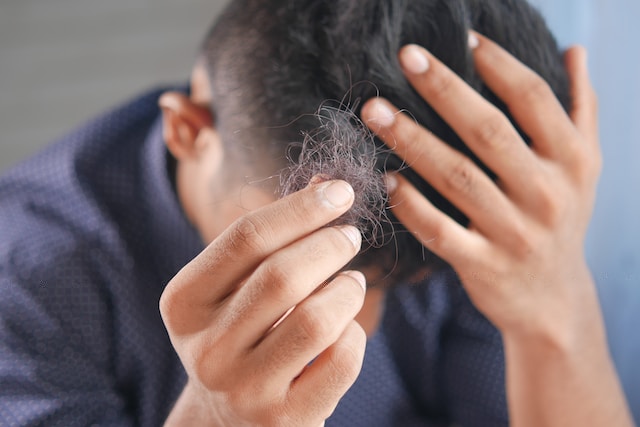Causes Of Hair Loss And How To Treat Them
Dec 31, 20230 Comments

Hair loss is a common concern that affects both men and women. It can be distressing to experience thinning hair or bald patches, but the good news is that there are various causes of hair loss and effective treatments available. In this blog post, we will explore the different factors that contribute to hair loss and discuss the treatment options to help you regain your confidence and promote hair growth.
Causes of Hair Loss
-
Hereditary Hair Loss: Also known as male or female pattern baldness, hereditary hair loss is the most common cause of hair loss. It is influenced by genetics and hormonal factors. In men, it typically starts with a receding hairline and thinning at the crown, while women may experience overall thinning of the hair.
-
Aging: As we age, our hair naturally becomes thinner and more prone to breakage. This is due to a decrease in the production of hair follicles and changes in hormone levels.
-
Medical Conditions: Certain medical conditions can cause hair loss. One example is alopecia areata, an autoimmune disease that leads to patchy hair loss. Other conditions such as thyroid disorders, scalp infections, and hormonal imbalances can also contribute to hair loss.
-
Stress and Trauma: Physical or emotional stress can disrupt the hair growth cycle, leading to temporary hair loss. This condition is known as telogen effluvium. Traumatic events such as surgery, childbirth, or severe illness can trigger this type of hair loss.
-
Nutritional Deficiencies: Inadequate intake of essential nutrients, such as iron, zinc, and vitamins, can affect the health of your hair. A balanced diet rich in fruits, vegetables, and proteins is crucial for maintaining healthy hair.
-
Certain Medications and Treatments: Some medications, such as chemotherapy drugs, can cause temporary hair loss. Additionally, harsh treatments like excessive heat styling, chemical treatments, and tight hairstyles can damage the hair follicles and lead to hair loss.
How to Treat Hair Loss
-
Minoxidil: Minoxidil is an FDA-approved topical medication that can help stimulate hair growth and slow down hair loss. It is available over-the-counter and comes in the form of a foam or liquid. Regular application of minoxidil to the scalp can promote hair regrowth.
-
Finasteride: Finasteride is an oral medication that is primarily used to treat male pattern baldness. It works by blocking the conversion of testosterone to dihydrotestosterone (DHT), a hormone that contributes to hair loss. Finasteride requires a prescription from a healthcare professional.
-
Hair Transplantation: Hair transplantation is a surgical procedure that involves moving hair follicles from one part of the body (usually the back of the scalp) to the balding areas. This procedure can provide long-lasting results and restore a natural-looking hairline.
-
Laser Therapy: Low-level laser therapy (LLLT) is a non-invasive treatment option that uses red light to stimulate hair growth. It is believed to increase blood flow to the hair follicles and promote hair regrowth. Laser therapy can be done at home using handheld devices or in a clinical setting.
-
Scalp Micropigmentation: Scalp micropigmentation is a cosmetic procedure that involves tattooing tiny dots on the scalp to create the illusion of hair follicles. It is a non-surgical solution for individuals who prefer a shaved or buzzed hairstyle.
-
Lifestyle Changes: Making certain lifestyle changes can also help improve the health of your hair. Avoid excessive heat styling, chemical treatments, and tight hairstyles that can damage the hair. Eat a balanced diet rich in nutrients, stay hydrated, and manage stress levels through relaxation techniques or exercise.
Remember, it's important to consult with a dermatologist or a healthcare professional to determine the underlying cause of your hair loss and to discuss the most suitable treatment options for your specific situation. They can provide personalized advice and guidance based on your individual needs.
In conclusion, hair loss can be caused by various factors, including genetics, aging, medical conditions, stress, and nutritional deficiencies. Fortunately, there are effective treatments available to address hair loss and promote hair regrowth. Whether it's topical medications, surgical procedures, or lifestyle changes, finding the right approach for you can help restore your confidence and achieve healthy, beautiful hair.
I hope this blog post has provided you with valuable insights into the causes of hair loss and the available treatment options. Remember, you're not alone in this journey, and there are solutions out there to help you regain your luscious locks. Embrace your uniqueness and take proactive steps towards healthier hair!
